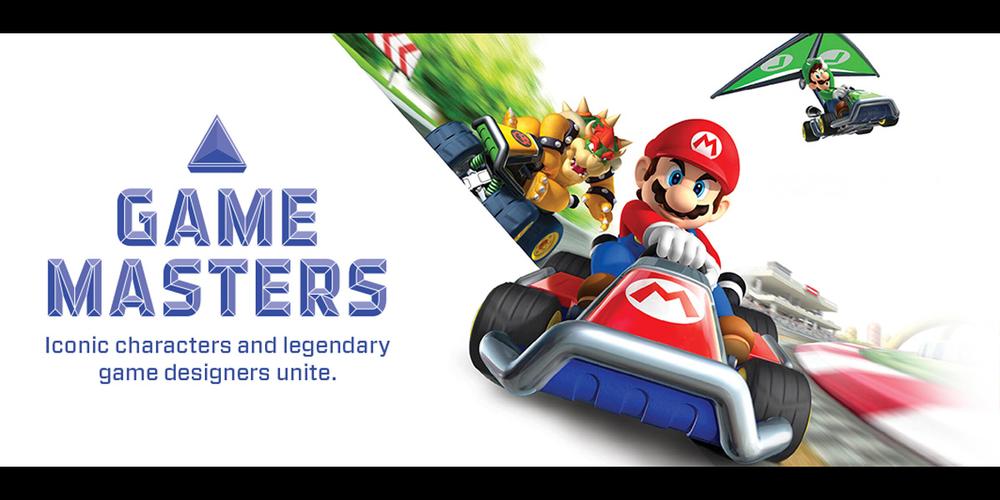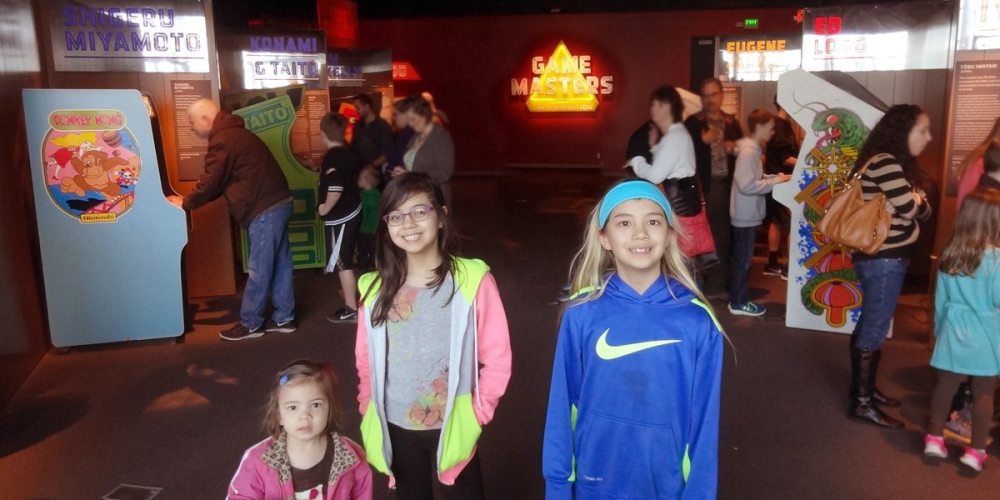
This week during our spring break, we took the whole family to OMSI to check out the Game Masters exhibit. (I’d stopped in briefly a couple weeks ago with just the toddler in tow so I could get some photos when it was less crowded, but this time my wife was there to help wrangle the toddler so I could actually play a few games myself.)
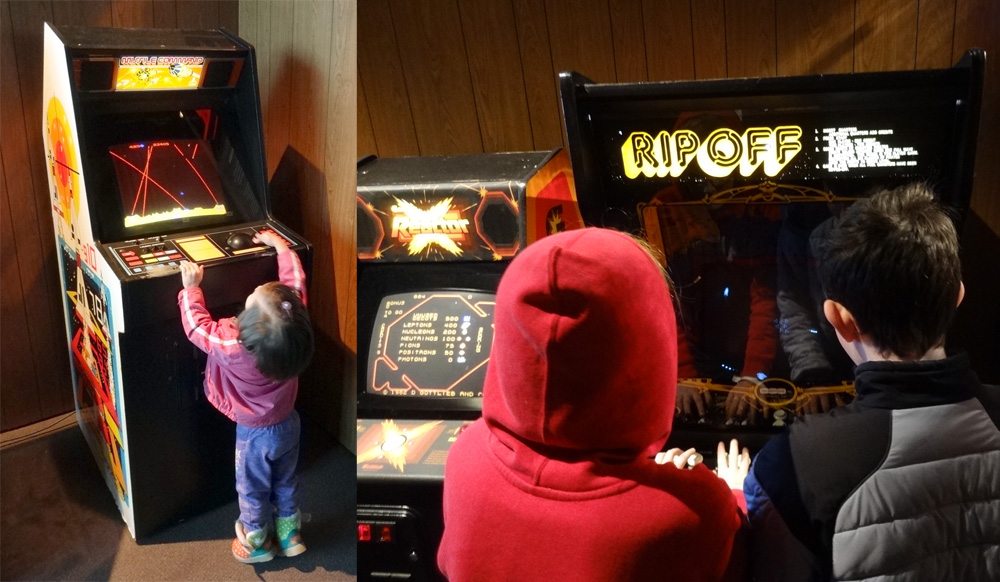
The exhibit starts with some arcade cabinets: classics like Pac-Man, Donkey Kong, Centipede, Asteroids, and more. It turns out I’m really bad at Missile Command, which I think I’d only really played on the Atari before and not in the arcade. I wasn’t ready for how quickly it ramped up. There were also some titles I hadn’t heard of before, like Rip-Off, a two-player cooperative game in which you fly around shooting enemy ships before they steal the little triangles from the middle of the screen, or Reactor, which was a pretty difficult game in which you tried to run enemies into the wall.
Throughout the exhibit there are signs about the game designers or publishers next to their games–fairly brief, with a bit about their history, some of their notable titles, and so on. Of course, it was hard to stop and read those sometimes when videogames were calling, but it also gave you something to read when you were standing in line waiting for your chance to play something.
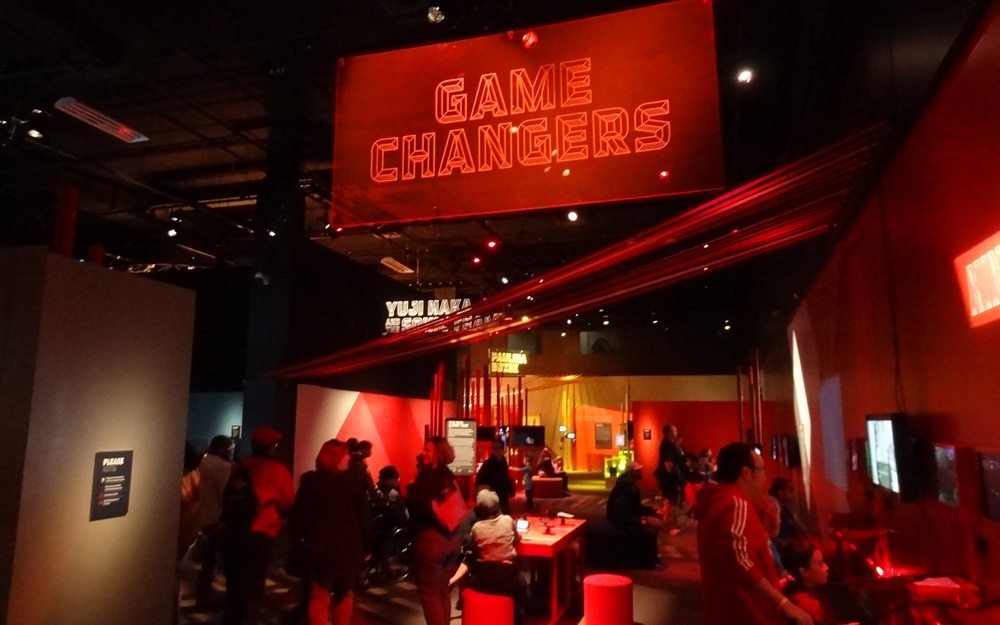
After that, there’s a section called “Game Changers,” mostly focused on console gaming. There’s a wall of Zelda games–from the NES to the Wii, plus a little table with several Nintendo DS devices. I haven’t ever owned a DS and hadn’t played Ocarina of Time before, so I got to try it out briefly from the beginning (though I didn’t get very far). There was also an entire wall of TT Games where you could play various LEGO videogames (Harry Potter, Star Wars, Batman, and so on).
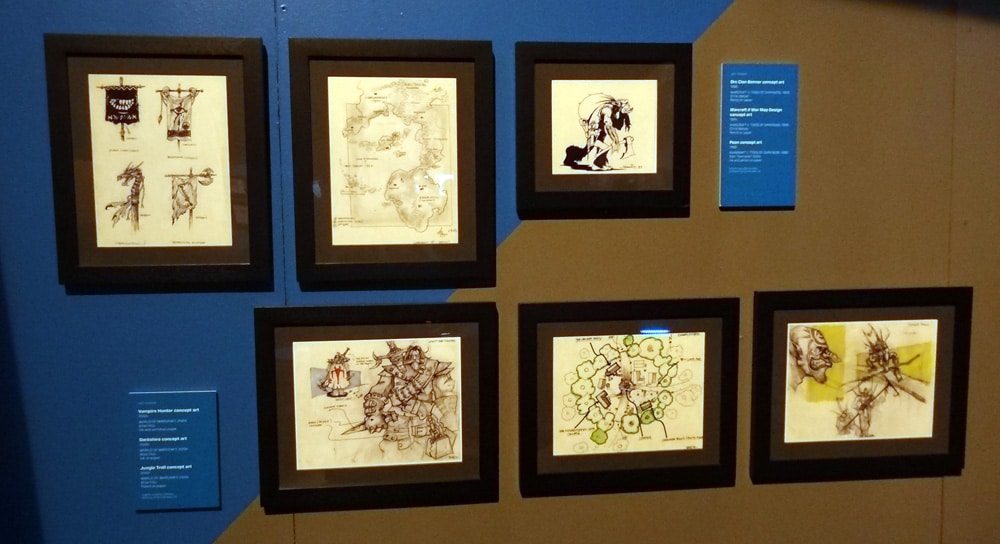
Blizzard Entertainment also got a display, with Warcraft III prominently featured, including some concept artwork on the walls. Nearby were two PlayStations for Ico and Shadow of the Colossus by Fumito Ueda. I had played Ico before but not Shadow of the Colossus, and I loved the look of it. There’s only so far you can get in a few minutes of play, though. I managed to track down the next Colossus but because I hadn’t played through the first portion, I was pretty helpless against it.
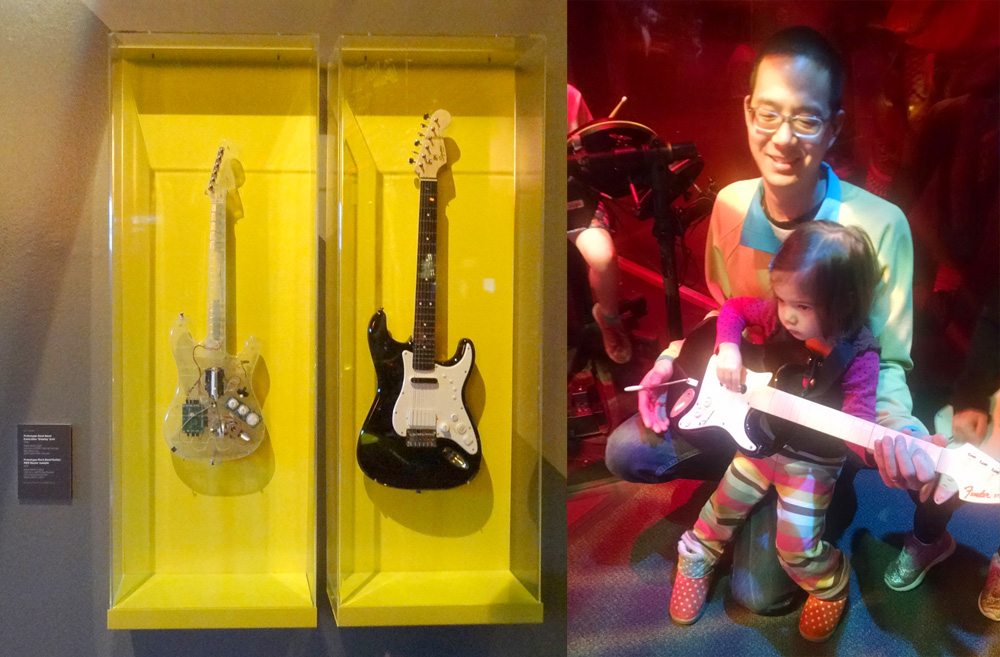
There were several rhythm-based games on display, too, and it was interesting to see the evolution of them. Parappa the Rapper and Space Channel 5 were among the older titles, where you followed and repeated a sequence. And then there’s Rock Band, of course, the game that made everyone a musician. Next to that was SingStar–my wife asked me: “Why didn’t anyone ever tell me there’s a competitive karaoke game?” We tried singing Aerosmith’s “Dude Looks Like a Lady” but my music repertoire is, alas, pretty limited because I listened to the oldies when I was a kid. I enjoyed playing Rock Band, though. Both of these games were in little enclosures, which was nice because the overall exhibit could get pretty noisy. Finally, there was a huge projector set up for Dance Central 2 on the Kinect, and there were always a lot of people in line for that one. Not everyone has a setup with that much space, where your avatar on the screen is life-sized–but of course it also meant dancing in front of an audience.
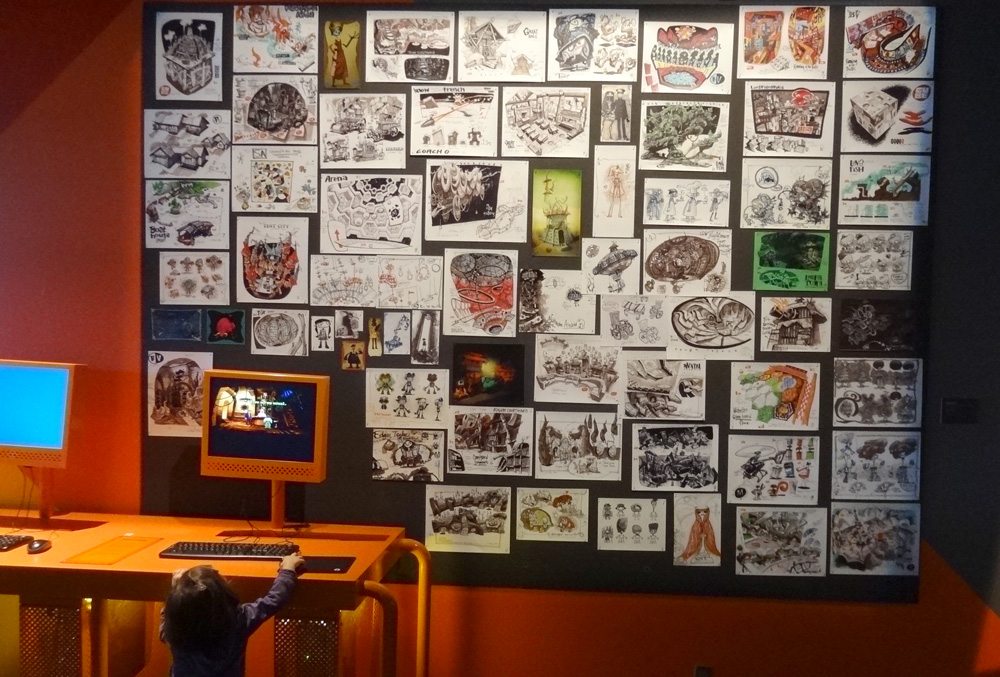
The exhibit continued upstairs with a large section focused on Tim Shafer: in addition to a lot of concept art on the walls, you could play several of his games, like Broken Age, Day of the Tentacle (in its original un-remastered glory), The Curse of Monkey Island, Psychonauts, and Brütal Legend.

There was even a tabletop games section, hosted by Guardian Games, a local game store. Why tabletop in a videogame exhibit? Well, there are some strong connections between videogames and tabletop games, and each type of game has its particular strengths. Although the photo above doesn’t have a lot of people in it, when I was there during spring break all the tables were filled with people trying out tabletop games. (That made me pretty happy.)
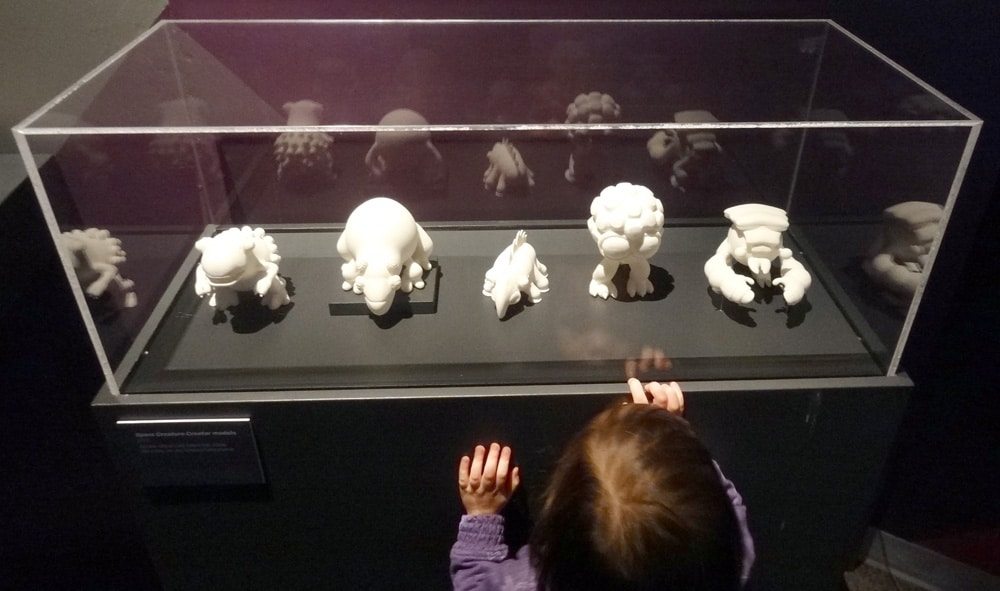
Other featured designers in this section were Will Wright, Warren Spector, and Peter Molyneux, with playable games for each of them, too. We created a creature in Spore and a family in The Sims. I recalled System Shock with some fondness and got lost in a dungeon in Ultima Underworld. And, of course, I could play god in Populous.

The last section was devoted to the “Indies”–a mix of iPad games, console games, and PC games. Angry Birds was there (and my toddler probably could have spent the rest of her life in front of the giant touchscreen for that), as was Fruit Ninja on the Kinect. There was a huge projected screen for Minecraft in one corner (of course), a few games I hadn’t heard of before, like Erik Svedang’s Blueberry Garden.
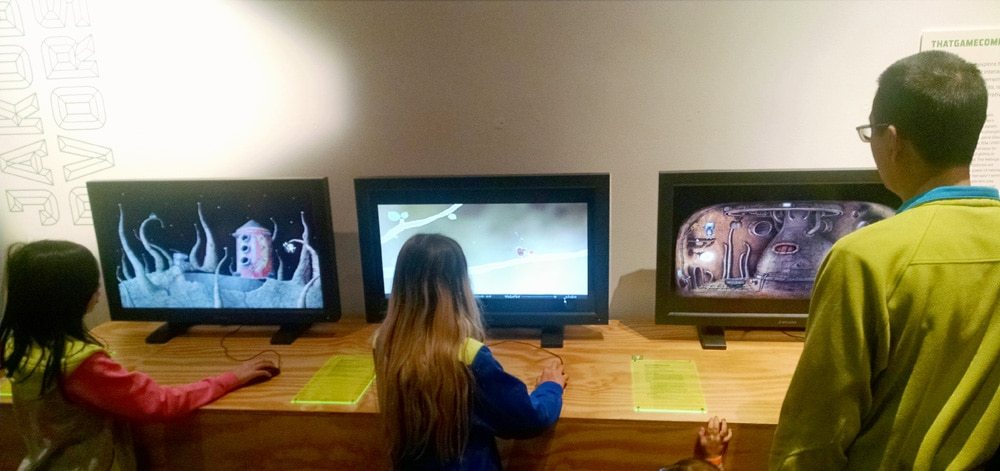
I’m a fan of point-and-click games, and so we spent a little time playing Samorost 2, Machinarium, and Botanicula. I actually own the first two, so after we got home I re-installed them so my kids could play them (again), and Botanicula is on our list now.
Each time I went there were a couple games that weren’t functional, but not too many. I can’t imagine trying to maintain an exhibit like this: PCs running old software, consoles of all different ages, arcade cabinets–and a bunch of gamers touching everything all the time! But if you like videogames, it’s definitely worth checking out. We spent about two hours there and I think we could easily have spent double that if it hadn’t hit toddler o’clock.
I’m sure avid videogamers may notice some titles that are missing–for instance, it was surprising to me that Portal didn’t make it into the exhibit anywhere–but for what it is I think Game Masters does a pretty good job of showing the range and diversity of videogames.
For more information, visit the OMSI website.
Disclosure: OMSI provided passes for my family to attend the exhibit.
